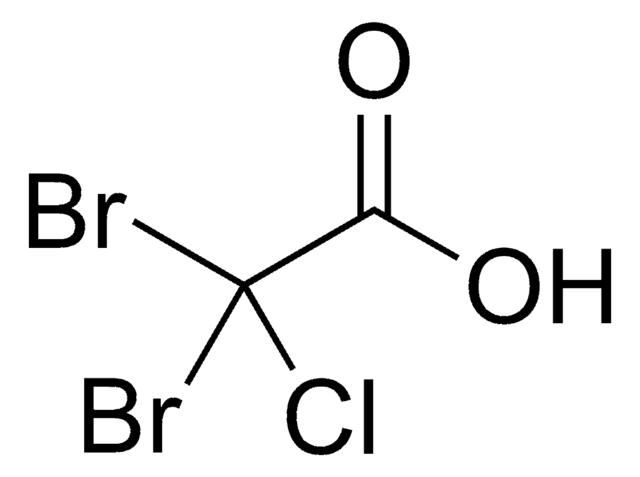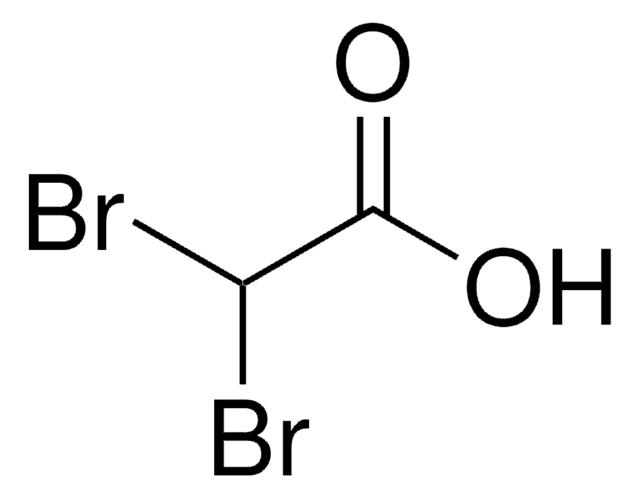442499
Bromdichloressigsäure
analytical standard
Synonym(e):
Bromdichloressigsäure
About This Item
Empfohlene Produkte
Qualität
analytical standard
Analysenzertifikat (CofA)
current certificate can be downloaded
Verpackung
ampule of 100 mg
Methode(n)
HPLC: suitable
gas chromatography (GC): suitable
mp (Schmelzpunkt)
69-72 °C (lit.)
Anwendung(en)
environmental
Format
neat
Lagertemp.
2-30°C
SMILES String
OC(=O)C(Cl)(Cl)Br
InChI
1S/C2HBrCl2O2/c3-2(4,5)1(6)7/h(H,6,7)
InChIKey
XSWVFEQKZFUULO-UHFFFAOYSA-N
Suchen Sie nach ähnlichen Produkten? Aufrufen Leitfaden zum Produktvergleich
Allgemeine Beschreibung
Sigma-Aldrich offers bromodichloroacetic acid for a variety of applications that include, but are not limited to, environmental, food and beverage, forensics, petrochemical and pharmaceutical analysis.
Anwendung
Signalwort
Danger
H-Sätze
Gefahreneinstufungen
Acute Tox. 4 Dermal - Acute Tox. 4 Inhalation - Acute Tox. 4 Oral - Eye Dam. 1 - Skin Corr. 1B
Lagerklassenschlüssel
8A - Combustible corrosive hazardous materials
WGK
WGK 3
Flammpunkt (°F)
Not applicable
Flammpunkt (°C)
Not applicable
Persönliche Schutzausrüstung
Eyeshields, Faceshields, Gloves, type P3 (EN 143) respirator cartridges
Hier finden Sie alle aktuellen Versionen:
Besitzen Sie dieses Produkt bereits?
In der Dokumentenbibliothek finden Sie die Dokumentation zu den Produkten, die Sie kürzlich erworben haben.
Kunden haben sich ebenfalls angesehen
Unser Team von Wissenschaftlern verfügt über Erfahrung in allen Forschungsbereichen einschließlich Life Science, Materialwissenschaften, chemischer Synthese, Chromatographie, Analytik und vielen mehr..
Setzen Sie sich mit dem technischen Dienst in Verbindung.











